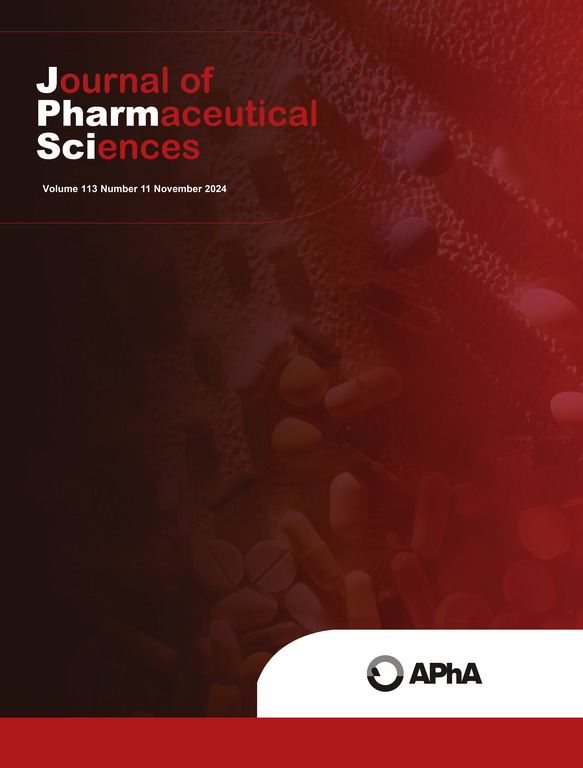反式白藜芦醇负载的纳米结构脂质载体配方用于医用雾化器的肺部药物输送。
IF 3.7
3区 医学
Q2 CHEMISTRY, MEDICINAL
引用次数: 0
摘要
气溶胶化是一种非侵入性的给药方法,可产生局部和全身效应,特别是肺部靶向效应。本研究旨在通过医用雾化器将抗癌药物反式白藜芦醇(TR)包裹在新一代多功能载体纳米结构脂质载体(NLC)中,以防止降解并提高生物利用度。通过热高压均质法,采用不同的配方成分组合和比例制备了 12 种 TR-NLC 配方(即 F1-F12)。经分析,配方 F1 和 F2 的粒度为 94%。通过新一代冲击器(NGI),使用医用雾化器对 F1 和 F2 配方进行了气溶胶性能测试。空气喷射雾化器在早期阶段(1-2)的药物沉积量较低,而在后期阶段(3-5)的沉积量明显较高(两种配方均是如此),目标是肺部中下层沉积。此外,与 F2 配方相比,使用 F1 配方时,空气喷射雾化器的发射剂量 (ED) (87.44 ± 3.36%)、细颗粒剂量 (FPD) (1652.52 ± 9.68 µg)、细颗粒分数 (FPF) (36.25 ± 4.26%) 和可吸入分数 (RF) (93.41 ± 4.03%)都明显较高。因此,TR-NLC F1 配方和喷气式雾化器被认为是最佳的给药组合,可用于外周肺。本文章由计算机程序翻译,如有差异,请以英文原文为准。

Trans-resveratrol-loaded nanostructured lipid carrier formulations for pulmonary drug delivery using medical nebulizers
Aerosolization is a non-invasive approach of delivering drugs for both localized and systemic effects, specifically pulmonary targeting. The aim of this study was to deliver trans-resveratrol (TR) as an anti-cancer drug entrapped in a new generation versatile carriers nanostructured lipid carrier (NLC) to protect degradation and improve bioavailability via medical nebulizers. Twelve TR-NLC (i.e., F1-F12) formulations were prepared using different combinations and ratios of formulation ingredients via hot high-pressure homogenization. Upon analysis, formulations F1 and F2 demonstrated a particle size of <185 nm, a polydispersity index (PDI) <0.25, Zeta potential values of ∼30 mV and an entrapment efficiency >94%. The aerosolization performance of the F1 and F2 formulations was performed via a next generation impactor (NGI), using medical nebulizers. The air jet nebulizer demonstrated lower drug deposition in the earlier stages (1-2) and significantly higher deposition in the latter stages 3-5 (for both formulations), targeting middle to lower lung deposition. Moreover, the air jet nebulizer exhibited significantly higher emitted dose (ED) (87.44 ± 3.36%), fine particle dose (FPD) (1652.52 ± 9.68 µg) fine particle fraction (FPF) (36.25 ± 4.26%), and respirable fraction (RF) (93.41 ± 4.03%) when the F1 formulation was used as compared to the F2 formulation. Thus, the TR-NLC F1 formulation and air jet nebulizer were identified as the best combination for the delivery and targeting peripheral lungs.
求助全文
通过发布文献求助,成功后即可免费获取论文全文。
去求助
来源期刊
CiteScore
7.30
自引率
13.20%
发文量
367
审稿时长
33 days
期刊介绍:
The Journal of Pharmaceutical Sciences will publish original research papers, original research notes, invited topical reviews (including Minireviews), and editorial commentary and news. The area of focus shall be concepts in basic pharmaceutical science and such topics as chemical processing of pharmaceuticals, including crystallization, lyophilization, chemical stability of drugs, pharmacokinetics, biopharmaceutics, pharmacodynamics, pro-drug developments, metabolic disposition of bioactive agents, dosage form design, protein-peptide chemistry and biotechnology specifically as these relate to pharmaceutical technology, and targeted drug delivery.

 求助内容:
求助内容: 应助结果提醒方式:
应助结果提醒方式:


